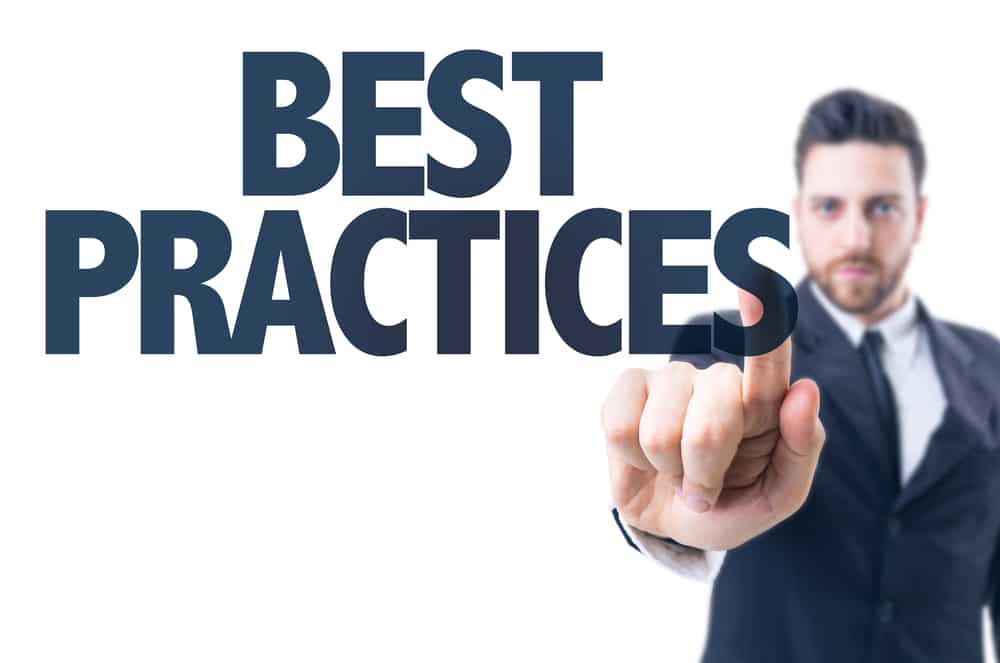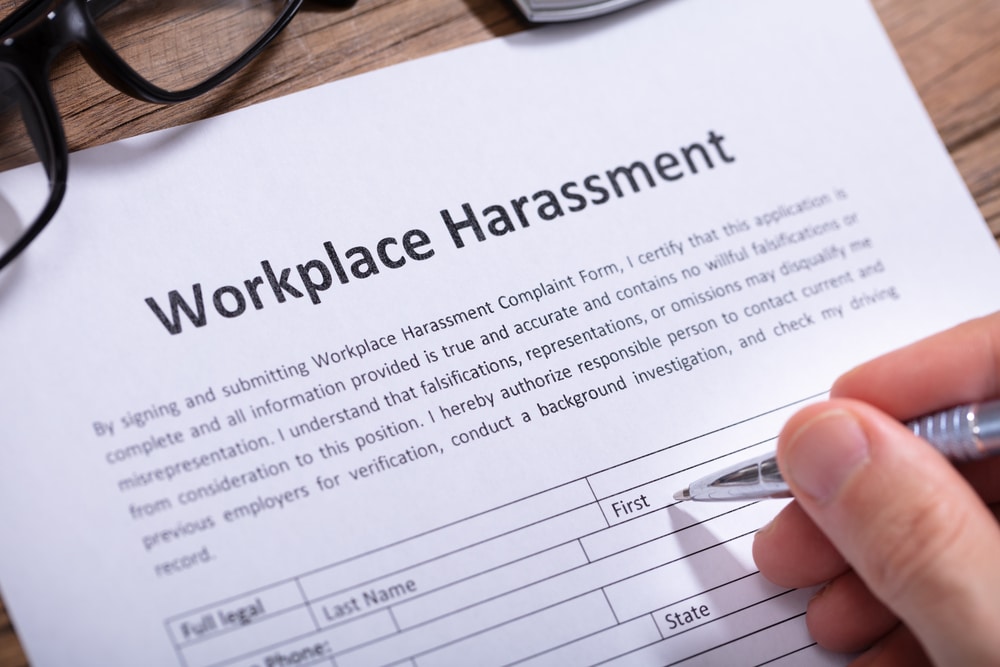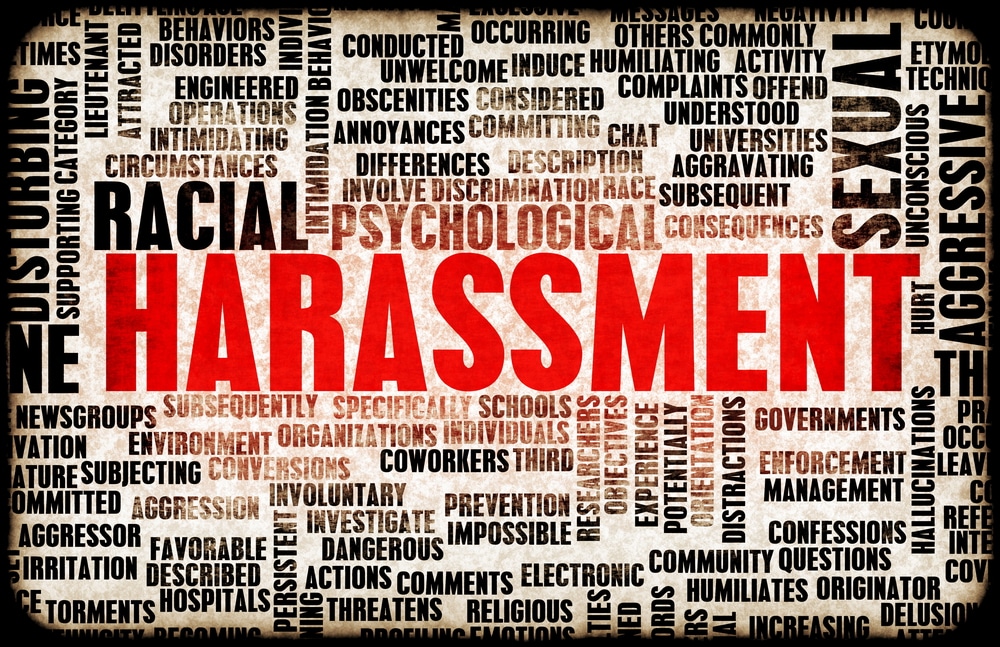Best Practices for HR in Handling Harassment Reports

Even with increased efforts to protect the workplace from retaliation and legal action, sexual harassment occurs on the clock. Employees must know that an HR professional has their back and will take their harassment reports seriously.
Creating a respectful workplace with anti-harassment policies will boost employee morale, so addressing inappropriate conduct is important. The HR team is responsible for handling the situation and filing the right reports to ensure the workplace culture is positive and healthy.
So, how should HR professionals handle harassment? We dive into that here. However, we also created a complete sexual harassment training course for employees that you can check out as well.
What Is Harassment In The Workplace?
Harassment in the workplace can take many forms, from physical harassment to unlawful conduct that requires more severe consequences. The Equal Employment Opportunity Commission (EEOC) defines workplace harassment as unwelcome conduct based on race, religion, sexual orientation, age, etc.
Not all harassing behavior towards other employees is considered harassment, and not all harassment in the workplace is considered unlawful. Human resources is responsible for knowing and enforcing these guidelines to ensure that the working environment is healthy.
The variety of actions that are considered harassment can range from name-calling to threats and intimidation to interfering with productivity in the workplace. Online harassment can also be counted, depending on the situation and the nature of the interaction. You should also know that different countries also have laws surrounding sexual harassment; it’s not just in the United States.

What Constitutes Sexual Harassment?
Sexual harassment in the workplace is any unwanted advances or attention of a sexual nature. This includes unwelcome sexual advances, requests for sexual favors, offensive conduct of a sexual nature, and other similar allegations.
It’s important to note that any employee of any race, gender, sex, color, or orientation can be the victim of an offensive work environment, regardless of their position within the company or the length of their service. The HR team must handle harassment complaints fairly and without implicit bias to ensure that all parties are treated equally.
What Does Workplace Harassment Look Like?
Aside from obvious examples, like violence in the workplace, intimidation or pressure to provide favors in exchange for employment, unwanted contact during the work day, or other similar situations, incidents can be more subtle.
For example, an employee commenting about another coworker’s appearance daily could violate harassment policies if the comments are particularly hurtful or impactful to the affected employee’s productivity. Attempts to humiliate another employee or create an unsafe working environment can also face consequences, especially if they cause physical or emotional harm to others.
Harassment may go undetected for some time if not reported or visibly apparent. HR department employees must know what to look for and how to handle the situation. Following the EEOC guidelines for harassment is the first step in keeping your business compliant with the law.

Best Practices For Reporting Harassment
Knowing how to report harassment complaints and ensure they are handled properly will ensure that the proper action is taken seriously. Employees can file harassment complaints against a direct supervisor or coworker when workplace conduct is inappropriate.
Investigating harassment complaints and reporting proven harassment claims is essential to maintaining a safe working environment and seeking justice and safety for the involved parties. Unlawful harassment complaints must be handled swiftly and thoroughly to avoid further harm in the office.
Address Harassment And Accountability
One of the most important things is to address the harassment complaint. HR compliance requires addressing these complaints to assess the employee’s well-being. The victim’s supervisor is responsible for taking accountability for the department, local laws, and the harassment policies in the office.
Taking a stand in the office that supports a positive work culture allows all employees, including the parties involved, to see a unified front against unwanted behavior.
Handle Complaints Fairly
Alleged harassment must be taken seriously and reported to ensure that an investigation is made into the allegations. Bias must be withheld from the person harassed, as coming forward is not always easy. The harassment policy does not discriminate, nor should HR, when the investigation is underway.
HR must assure the affected employee that there is no need to fear retaliation for coming forward and that Human Resources is investigating their harassment claims.

Open Communication
Having open communication channels during the investigation is important to ensure the report is followed up correctly. In cases of sexual harassment and unlawful harassment, the victim may need additional support until the matter or complaint is resolved.
Going over the harassment policy can help establish what boundaries were crossed and what action needs to be taken when conducting interviews during the investigation. Ensuring the complaint process is worker-friendly and each co-worker feels supported is vital to resolving these issues in a safe work environment.
Corrective Action
Taking corrective action ensures that the harassment claim is handled properly. Whether that results in disciplinary action, paid leave, or termination, it’s important to protect the victim and find a solution that keeps them safe.
After evaluating all the information, deciding on the appropriate action will help improve conditions in the work environment and avoid unfair retaliation.
Implement Effective Training
An important measure after receiving a complaint to move towards anti-harassment policies is to provide updated training. At every level of the company, training can be issued for sexual harassment prevention and complaints.
This training should be updated regularly and rolled out to all employees so that they are aware of how to spot unwanted advances in the workplace, where and how to report harassment, how to de-escalate a situation, and what the investigation process looks like so that the office has complete transparency.
How Do You Handle a Harassment Investigation?
When a complaint is filed in the office, employees in HR must take several steps to act in compliance with anti-harassment protocol. After collecting all the evidence, it’s important to define what kind of interaction took place, whether it was sexual harassment or another kind, to ensure that the victim is protected, the accused is investigated, and the matter is resolved peacefully.
Several steps must be taken to ensure the investigation runs smoothly in this process.

Confidentiality
The employer is responsible for safeguarding the confidentiality of employees’ claims whenever possible. It’s not easy to balance broad regulations and the terms of employment, so careful steps must be taken to protect the employee. Information should only be shared on a need-to-know basis, though complete confidentiality cannot be guaranteed.
Witnesses and the accused may be told certain details, but protecting the victim’s privacy is the foremost concern when investigating a harassment complaint.
Protection
When investigating a workplace harassment complaint, separating the victim and the accused is best to prevent further harm. Such methods for separation include schedule changes, transfers, or paid leaves of absence to prevent retaliation on the victim.
All acts should have the complainant agree willingly, lest they be misrepresented as retaliation for speaking out.
Appoint An Investigator
The right investigator for the complaint should be able to hold an outside perspective and have no stake in the outcome to ensure that the results are fair. An investigator should be able to hear both sides and evaluate the situation themselves. Strong interpersonal and attentive listening skills will help both parties in the situation feel heard and valued, regardless of the outcome.
They also must be able to maintain confidentiality to protect the rights of each of the employees involved. Depending on the circumstances, investigators can be chosen from several places, like the HR department, a third-party agency, in-house legal counsel, a team of qualified individuals, or internal security.
Conduct Interviews
Holding interviews with the affected parties allows both sides to share their stories without interruption. This process is crucial, as asking the right questions can clear up where there may have been misunderstandings or where serious allegations are confirmed.
This process must be handled with care, and it can be a multi-day process to properly vet the victim, alleged harasser, and any potential witnesses.

Make A Decision
Once all of the details have been laid out, it’s time to make a decision that will affect the team. Rule out any credibility issues and evaluate all the information at hand. Deciding these cases isn’t just about which employees are guilty, but what the right course of action is and how to get there.
The outcome wholly depends on the severity of the guilty party’s actions. Verbal abuse may result in a department change for the accused, and physical altercations may result in termination.
Close The Investigation
Closing out the investigation means notifying the people involved on both sides to relay the decision and the next steps. The complainant must agree that they feel heard and respected, regardless of the outcome, followed by a later meeting where any issues settling back into the working environment can be addressed safely.
Legal counsel is advised to proceed, as they can help assess whether more training needs to be issued, if damages need to be covered, or if a review of the entire investigation is necessary before completely closing it off.
How To Prevent Harassment
How should an HR department respond to a complaint of harassment? The best and simplest method is to ensure it doesn’t happen in the first place.
Proper training and vigilance can prevent unwanted advances and disruptive behavior. Employees will need to be educated on what these patterns of behavior look like, how to intervene on behalf of a coworker, how to support the coworker or confront the alleged coworker safely, and how to file a report in the first place.
Knowing this can enable a work environment to act accordingly and assess harmful behaviors before they escalate. Some employees may not be aware that their behaviors are being perceived this way, so it’s important to educate the office on how to be kind and respectful toward their peers.
Final Thoughts On Handling Harassment Complaints
Every office will likely encounter difficulties, but preparing staff beforehand with the right tools and knowledge to combat dangerous and harmful interactions can create a safe environment for all workers.
If a complaint is filed, HR is responsible for following the necessary steps to resolve it and ensuring that all parties are properly and promptly addressed. Hopefully, these best practices for HR in harassment scenarios have been helpful to you and your team.